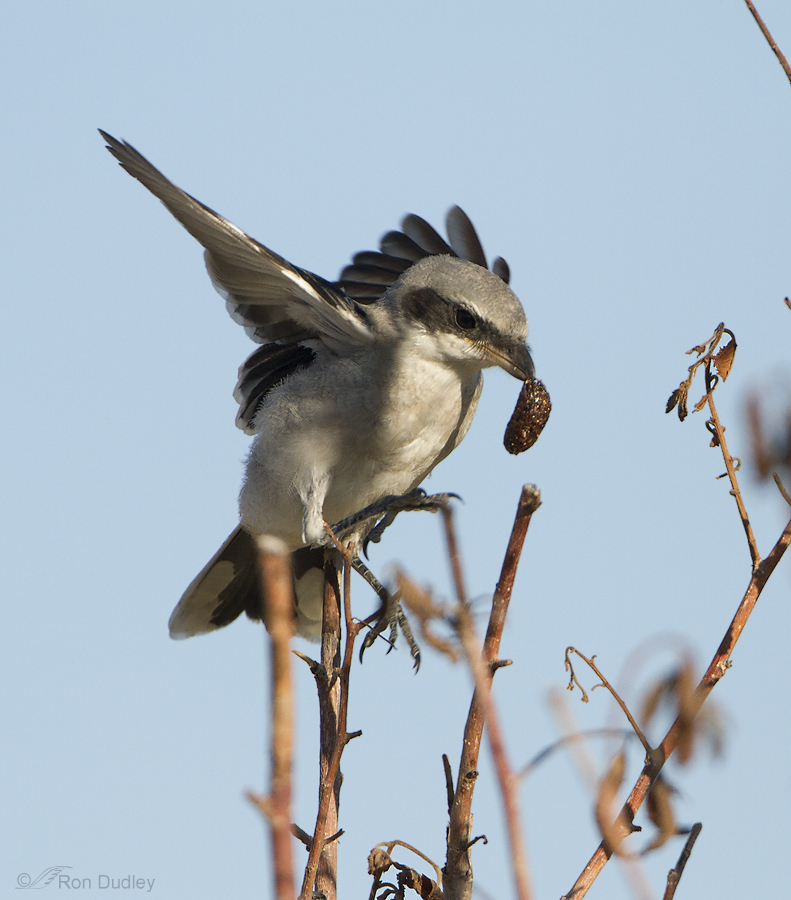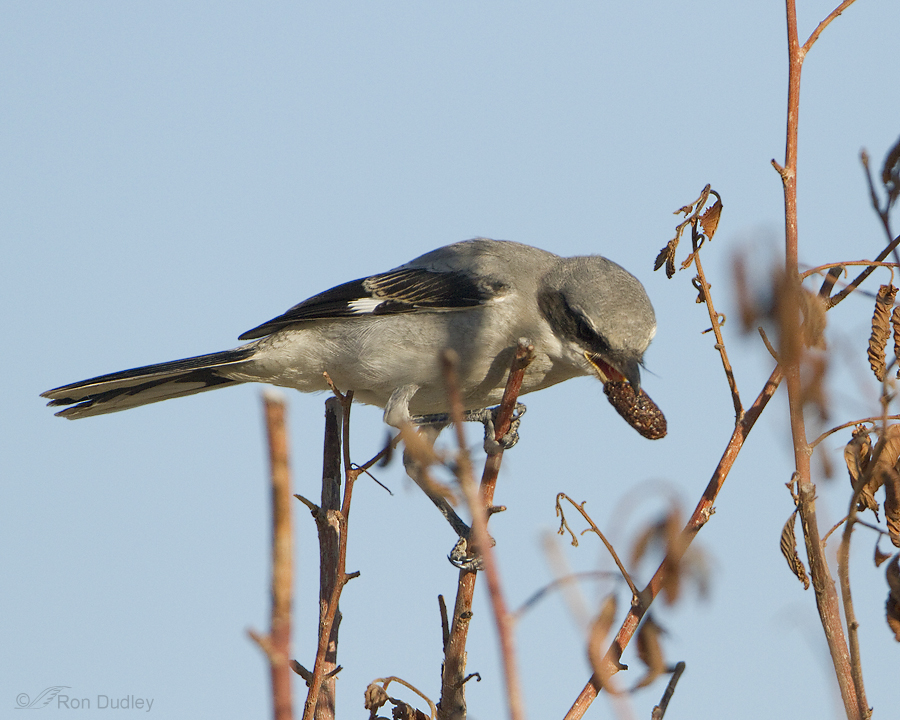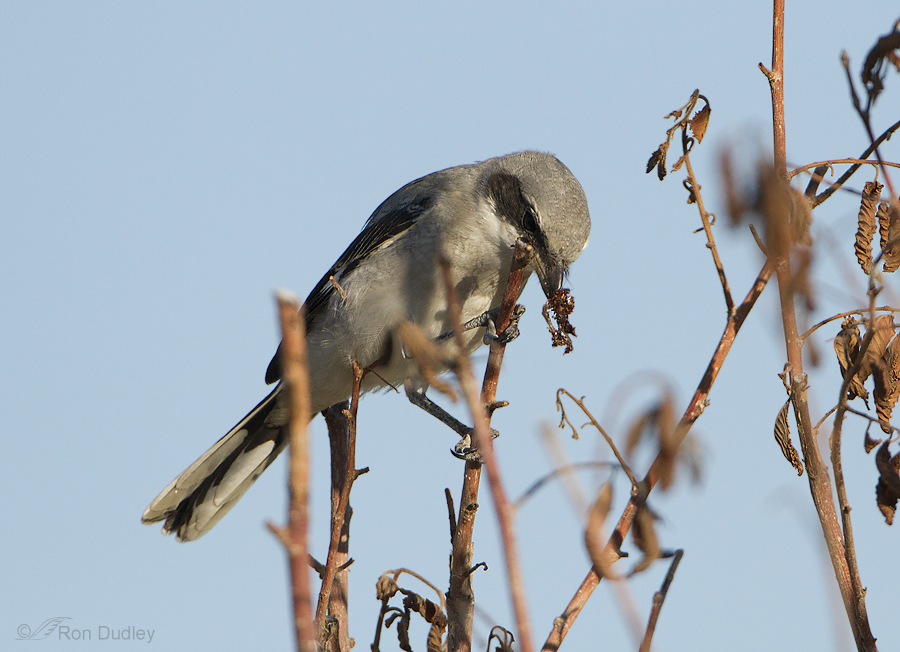This post is documentary only. The images are not aesthetically pleasing.
Loggerhead Shrikes produce a pellet from an insect meal only 35.5 minutes (on average) after consumption. This is an amazingly fast turn-around time (Short-eared Owls average 8.5 hours before a pellet is produced from their rodent prey). When shrikes are consuming insects and spiders their pellets consist of the indigestible chitinous exoskeletons of those arthropods.
I’ve seen and photographed Loggerhead Shrikes ejecting pellets many times but what I photographed on this August morning was new to me.
Because of the cluttered setting I was mostly only watching this juvenile through my lens (not photographing it) when I could tell it was about to chuck up a pellet. Every time I’ve observed this behavior in the past the pellet was ejected quickly and cleanly and simply fell to the ground. But this bird had a surprise for me. It caught the pellet in the tip of its beak…
and manipulated it there for some time.
Then it very deliberately mashed up the pellet and appeared to be swallowing parts of it as other smaller pieces fell to the ground.
My guess would be that about half of the pellet was consumed as the other half fell away, though I can’t be absolutely certain that any of it was actually eaten because my view of what was happening was not always a clear one.
I wish I knew what was really going on here. This is the only time I’ve ever seen a bird (of any species) manipulate a pellet after regurgitation, much less apparently eat parts of it. I’ve wondered if it could have been a form of “play” which is not unusual in some species but BNA Online says that play in Loggerhead Shrikes is “not noted”.
Yet another bird behavior to be intrigued by…
Ron






Fascinating! I’m so glad you didn’t just watch, but captured the behavior. Much as I love pretty photos, I’m fascinated by those that illustrate behavior.
Since the subject is a young bird, perhaps he was just experimenting to see if there was anything good to eat. By such experimentation, he will likely learn the answer is “no” and eventually modify his behavior and spend his energy chasing the fresh stuff. Again, just speculation, but it sure is interesting when you encounter it in the field!
Maybe I’m off the subject, but caterpillars eat their exoskeleton to acquire necessary nutrients and protein needed for their instar phases. I suppose birds or mammals may do it to track a mate. I have no idea.
Very strange behavior. I bet you were excited to see this. These types of things fascinate me. Well done Ron!
Thanks, Bryce. Yes, I was excited. And a little perplexed.
Maybe you’re the first person to “note” play in a loggerhead shrike? Or, “kids will do the strangest things”? Or, what Elephant’s Child said. Or maybe birds are susceptible to that “craving for weird non-foodstuffs” condition, pica is it? These photos may not be as aesthetically pleasing as your others, but there’s a wealth to learn here– thanks!
All kinds of possibilities, aren’t there, Chris? Interesting to speculate.
I am wondering whether food was scarce and it was ensuring that it got all possible nutrients from that meal?. There is always something new to see and learn isn’t there?
I considered that possibility also, Elephant’s Child – especially since some herbivorous mammals (rabbits for example) are known for eating their own feces in order to do just that. However I’m doubtful because though that strategy makes sense in cellulose consumers (cellulose is very difficult to digest so an additional pass through the gut would make digestion more efficient) it seems to me that it wouldn’t be needed by protein consumers. Just speculation on my part…